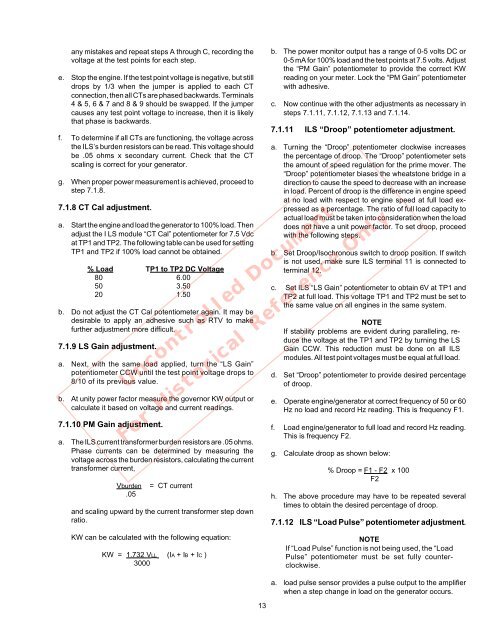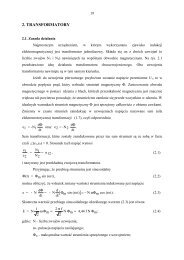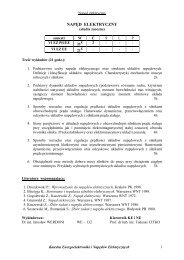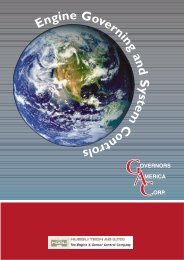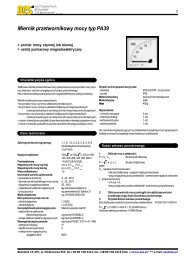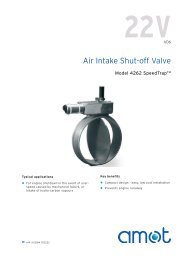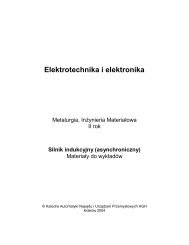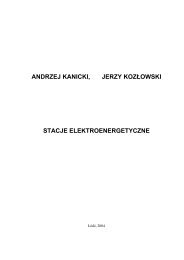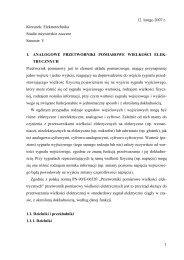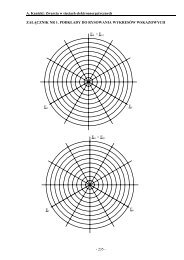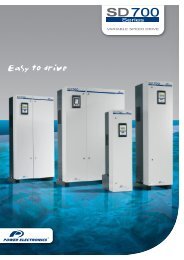DYNA II Digital Isochronous Load Sharing - ssdservice.pl
DYNA II Digital Isochronous Load Sharing - ssdservice.pl
DYNA II Digital Isochronous Load Sharing - ssdservice.pl
You also want an ePaper? Increase the reach of your titles
YUMPU automatically turns print PDFs into web optimized ePapers that Google loves.
any mistakes and repeat steps A through C, recording the<br />
voltage at the test points for each step.<br />
e. Stop the engine. If the test point voltage is negative, but still<br />
drops by 1/3 when the jumper is ap<strong>pl</strong>ied to each CT<br />
connection, then all CTs are phased backwards. Terminals<br />
4 & 5, 6 & 7 and 8 & 9 should be swapped. If the jumper<br />
causes any test point voltage to increase, then it is likely<br />
that phase is backwards.<br />
f. To determine if all CTs are functioning, the voltage across<br />
the ILS’s burden resistors can be read. This voltage should<br />
be .05 ohms x secondary current. Check that the CT<br />
scaling is correct for your generator.<br />
g. When proper power measurement is achieved, proceed to<br />
step 7.1.8.<br />
7.1.8 CT Cal adjustment.<br />
a. Start the engine and load the generator to 100% load. Then<br />
adjust the I LS module “CT Cal” potentiometer for 7.5 Vdc<br />
at TP1 and TP2. The following table can be used for setting<br />
TP1 and TP2 if 100% load cannot be obtained.<br />
% <strong>Load</strong> TP1 to TP2 DC Voltage<br />
80 6.00<br />
50 3.50<br />
20 1.50<br />
b. Do not adjust the CT Cal potentiometer again. It may be<br />
desirable to ap<strong>pl</strong>y an adhesive such as RTV to make<br />
further adjustment more difficult.<br />
7.1.9 LS Gain adjustment.<br />
a. Next, with the same load ap<strong>pl</strong>ied, turn the “LS Gain”<br />
potentiometer CCW until the test point voltage drops to<br />
8/10 of its previous value.<br />
b. At unity power factor measure the governor KW output or<br />
calculate it based on voltage and current readings.<br />
7.1.10 PM Gain adjustment.<br />
Uncontrolled Document<br />
b. The power monitor output has a range of 0-5 volts DC or<br />
0-5 mA for 100% load and the test points at 7.5 volts. Adjust<br />
the “PM Gain” potentiometer to provide the correct KW<br />
reading on your meter. Lock the “PM Gain” potentiometer<br />
with adhesive.<br />
c. Now continue with the other adjustments as necessary in<br />
steps 7.1.11, 7.1.12, 7.1.13 and 7.1.14.<br />
7.1.11 ILS “Droop” potentiometer adjustment.<br />
a. Turning the “Droop” potentiometer clockwise increases<br />
the percentage of droop. The “Droop” potentiometer sets<br />
the amount of speed regulation for the prime mover. The<br />
“Droop” potentiometer biases the wheatstone bridge in a<br />
direction to cause the speed to decrease with an increase<br />
in load. Percent of droop is the difference in engine speed<br />
at no load with respect to engine speed at full load expressed<br />
as a percentage. The ratio of full load capacity to<br />
actual load must be taken into consideration when the load<br />
does not have a unit power factor. To set droop, proceed<br />
with the following steps.<br />
b. Set Droop/<strong>Isochronous</strong> switch to droop position. If switch<br />
is not used, make sure ILS terminal 11 is connected to<br />
terminal 12.<br />
c. Set ILS “LS Gain” potentiometer to obtain 6V at TP1 and<br />
TP2 at full load. This voltage TP1 and TP2 must be set to<br />
the same value on all engines in the same system.<br />
NOTE<br />
If stability problems are evident during paralleling, reduce<br />
the voltage at the TP1 and TP2 by turning the LS<br />
Gain CCW. This reduction must be done on all ILS<br />
modules. All test point voltages must be equal at full load.<br />
d. Set “Droop” potentiometer to provide desired percentage<br />
of droop.<br />
e. Operate engine/generator at correct frequency of 50 or 60<br />
Hz no load and record Hz reading. This is frequency F1.<br />
f. <strong>Load</strong> engine/generator to full load and record Hz reading.<br />
This is frequency F2.<br />
For Historical Reference Only<br />
a. The ILS current transformer burden resistors are .05 ohms.<br />
Phase currents can be determined by measuring the<br />
voltage across the burden resistors, calculating the current<br />
transformer current,<br />
Vburden = CT current<br />
.05<br />
and scaling upward by the current transformer step down<br />
ratio.<br />
g. Calculate droop as shown below:<br />
% Droop = F1 - F2 x 100<br />
F2<br />
h. The above procedure may have to be repeated several<br />
times to obtain the desired percentage of droop.<br />
7.1.12 ILS “<strong>Load</strong> Pulse” potentiometer adjustment.<br />
KW can be calculated with the following equation:<br />
KW = 1.732 VLL (IA + IB + IC )<br />
3000<br />
NOTE<br />
If “<strong>Load</strong> Pulse” function is not being used, the “<strong>Load</strong><br />
Pulse” potentiometer must be set fully counterclockwise.<br />
a. load pulse sensor provides a pulse output to the am<strong>pl</strong>ifier<br />
when a step change in load on the generator occurs.<br />
13


